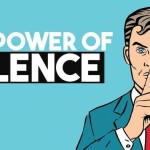In the United States alone, heart attacks are one of the leading causes of death throughout the country. Some symptoms begin showing up as early as a month in advance. Knowing the signs and symptoms of heart disease and heart attack can help save a life.
Heart attacks are severe medical conditions. These occur when there is plaque build-up in the coronary arteries. They occur when the body's blood supply is blocked, usually caused by a blood clot.
A heart attack is a dead tissue killed off during blood loss. This tissue causes extreme pain and squeezing, both felt during the heart attack.
Heart attacks are common in people with a high level of stress, heavy smokers, or morbidly overweight. However, regardless of the contributing factors, heart attacks are the number one killer of women across all spectrums. Therefore, it is essential to learn the signs and symptoms of a heart attack and receive regular check-ups from a doctor.
Today's article will discuss the warning signs of a heart attack and how to recognize them one month before it happens.
Chest pressure
This is the symptom that most people are familiar with. Most people will feel pressure pushing against their chest. This is a concrete sign that a heart attack is about to occur. Many people may ignore this pain, thinking it is a normal feeling. However, ignoring this sign could cost someone their life. They should receive immediate medical attention if they are experiencing any hard pressure in their upper chest.
Cold Sweats and Dizziness
When the body does not circulate blood properly, the brain will not receive the proper amount of blood. This is a huge issue; the patient should receive medical attention immediately.
Cold and Flu Symptoms
Many patients report experiencing cold or flu-like symptoms in the days following the attack. If these symptoms are felt, the patient should seek medical treatment immediately.
Weakness
When the body feels weak, sweaty, or nauseous, there may be trouble along the way. Jaw pain is another alarming sign. As the arteries in the body continue to narrow, the blood stops flowing throughout the body properly.
Shortness of Breath
The lungs are negatively affected. wIf the lungs do not receive enough blood or oxygen, the body struggles to breathe correctly. The lungs are negatively affected when the body does not receive sufficient blood. If the patient experiences trouble breathing, they should be seen by a doctor immediately to be checked out.
Fatigue
If someone is feeling exhausted most of the time, it could be caused by improper blood flow to the heart. This could happen as a result of plaque build-up in the arteries. Again, this should be checked out by a medical professional right away.
Conclusion
Knowing the signs and symptoms of heart disease and heart attacks can help save a life. Heart attacks are the number one killer of women across all spectrums. Some warning signs of a heart attack can begin as early as a month in advance. Many people may ignore this pain, thinking it is a normal feeling. It could be caused by the narrowing of the arteries or damage to the body's blood vessels.








